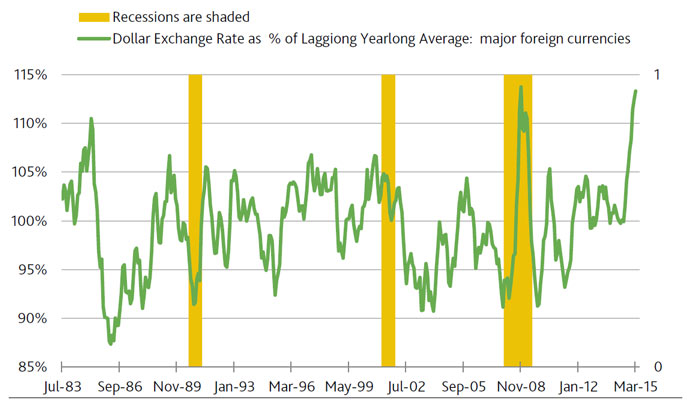From the Fed: Information received since the Federal Open Market Committee met in March suggests that economic growth slowed during the winter months, in part reflecting transitory factors. The pace of job gains moderated, and the unemployment rate remained steady. A range of labor market indicators suggests that underutilization of labor resources was little changed. Growth in household spending declined; households’ real incomes rose strongly, partly reflecting earlier declines in energy prices, and consumer sentiment re-mains high. Business fixed investment softened, the recovery in the housing sector remained slow, and exports declined. Inflation continued to run below the Committee’s longer-run objective, partly reflecting earlier declines in energy prices and decreasing prices of non-energy imports. Market-based measures of inflation compensation remain low; survey-based measures of longer-term inflation expectations have remained stable.
Consistent with its statutory mandate, the Committee seeks to foster maximum employment and price stability. Although growth in output and employment slowed during the first quarter, the Committee continues to expect that, with appropriate policy accommo-dation, economic activity will expand at a moderate pace, with labor market indicators continuing to move toward levels the Committee judges consistent with its dual man-date. The Committee continues to see the risks to the outlook for economic activity and the labor market as nearly balanced. Inflation is anticipated to remain near its recent low level in the near term, but the Committee expects inflation to rise gradually toward 2 per-cent over the medium term as the labor market improves further and the transitory effects of declines in energy and import prices dissi-pate. The Committee continues to monitor inflation developments closely.
To support continued progress toward maxi-mum employment and price stability, the Committee today reaffirmed its view that the current 0 to ¼ percent target range for the federal funds rate remains appropriate. In de-termining how long to maintain this target range, the Committee will assess progress—both realized and expected—toward its objectives of maximum employment and 2 percent inflation. This assessment will take into ac-count a wide range of information, including measures of labor market conditions, indica-tors of inflation pressures and inflation expec-tations, and readings on financial and interna-tional developments. The Committee antici-pates that it will be appropriate to raise the target range for the federal funds rate when it has seen further improvement in the labor market and is reasonably confident that infla-tion will move back to its 2 percent objective over the medium term.
The Committee is maintaining its existing pol-icy of reinvesting principal payments from its holdings of agency debt and agency mortgage-backed securities in agency mortgage-backed securities and of rolling over maturing Treasury securities at auction. This policy, by keeping the Committee’s holdings of longer-term securities at sizable levels, should help maintain accommodative financial conditions. When the Committee decides to begin to re-move policy accommodation, it will take a balanced approach consistent with its longer-run goals of maximum employment and inflation of 2 percent. The Committee currently anticipates that, even after employment and inflation are near mandate-consistent levels, economic conditions may, for some time, warrant keeping the target federal funds rate below levels the Committee views as normal in the longer run

